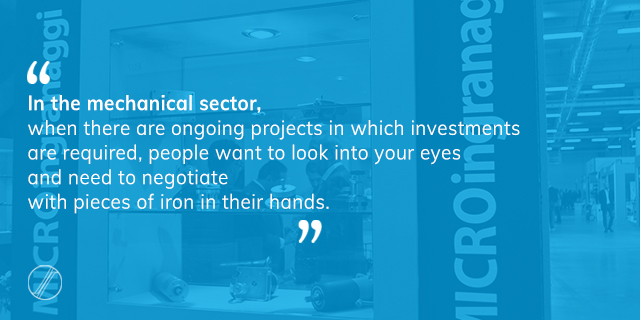Working in a sector such as the precision mechanics one means dealing with tiny parts that must always be perfectly clean, whether they are to be delivered to the customer or instead are intended for the Assembly Department for the next step.
But which washing system is it better to use? Is the solvent or the water-based detergent one best?
Working with tooling machines and therefore with various refrigerants, there are mainly two necessities: to degrease the pieces and to remove any machining residues. Both water-based detergents and solvents are able to resolve these problems but they do so differently.
After careful evaluation in 2010, we introduced at MICROingranaggi a washing system produced by the Paduan company IPF. It is a closed-circuit machine which employs ultrasound technology, uses as solvents modified alcohol and uses vacuum treatment. Several reasons led to us making this choice, starting from the fact that the quality of the solvent wash is, in our opinion, superior. But that’s not all.
The term “solvent” tends to scare people because it brings to mind something that is dangerous, toxic, harmful and not eco-friendly while a water-based detergent is mistakenly associated with human washing, appearing to be less invasive and dangerous.
My personal opinion, though, is based on a broader reasoning and is diametrically opposite. Let’s see why…
First of all it has to be taken into account the fact that water-based detergents used for industrial washing are not as environmentally friendly as you would imagine. They are used in low quantities, of course, precisely because they must be diluted in water, but must in any case be disposed of.
Then it must be considered that, by using a system of this kind, you will in fact be washing with water (which, together with air, is one of the main oxidising agents) products made of ferrous materials which therefore tend to oxidise. To address this critical situation, consequently, further treatment with specific technologies is needed (such as demineralised water) to prevent the workpiece collecting limestone or there remaining traces of water, thus inevitably prolonging washing times.
Furthermore, compared to solvent that has a rather high intrinsic degreasing power, water-based detergents will require more immersions of the pieces into the appropriate solutions so that they are perfectly clean and this will necessitate bulkier washing systems (precisely because they must accommodate more tanks for the various washing phases), increased use of water and greater energy consumption.
Managing a modern solvent washing system, in my opinion, is much simpler.
These machines once used toxic solvents and, after a few years, began to release harmful emissions. In recent years though – following tightening of the relevant reference legislation – they have evolved significantly, solving those problems.
A system of this kind is now able to detect that the percentage of lubricant present in the solvent inside its tank has exceeded a certain threshold. This features allows moving to the distillation step, in fact intended to clean the solvent again so that it can be re-used. Through this process, the lubricant will also be recovered which – thanks to the elimination of sludge – can also be reused. Even in this case there will be a power consumption, but it will be less than that required by a water-based detergent washing system.





